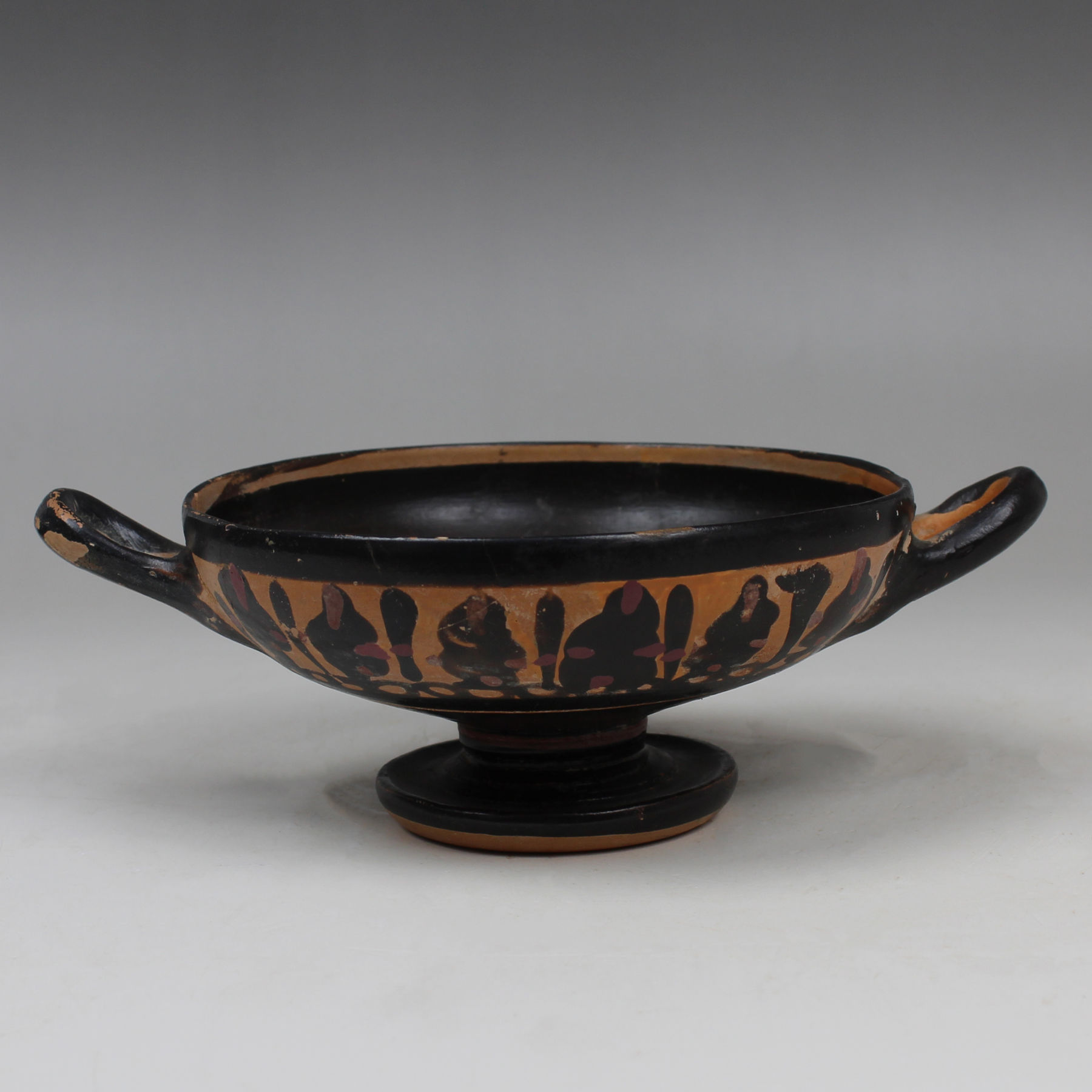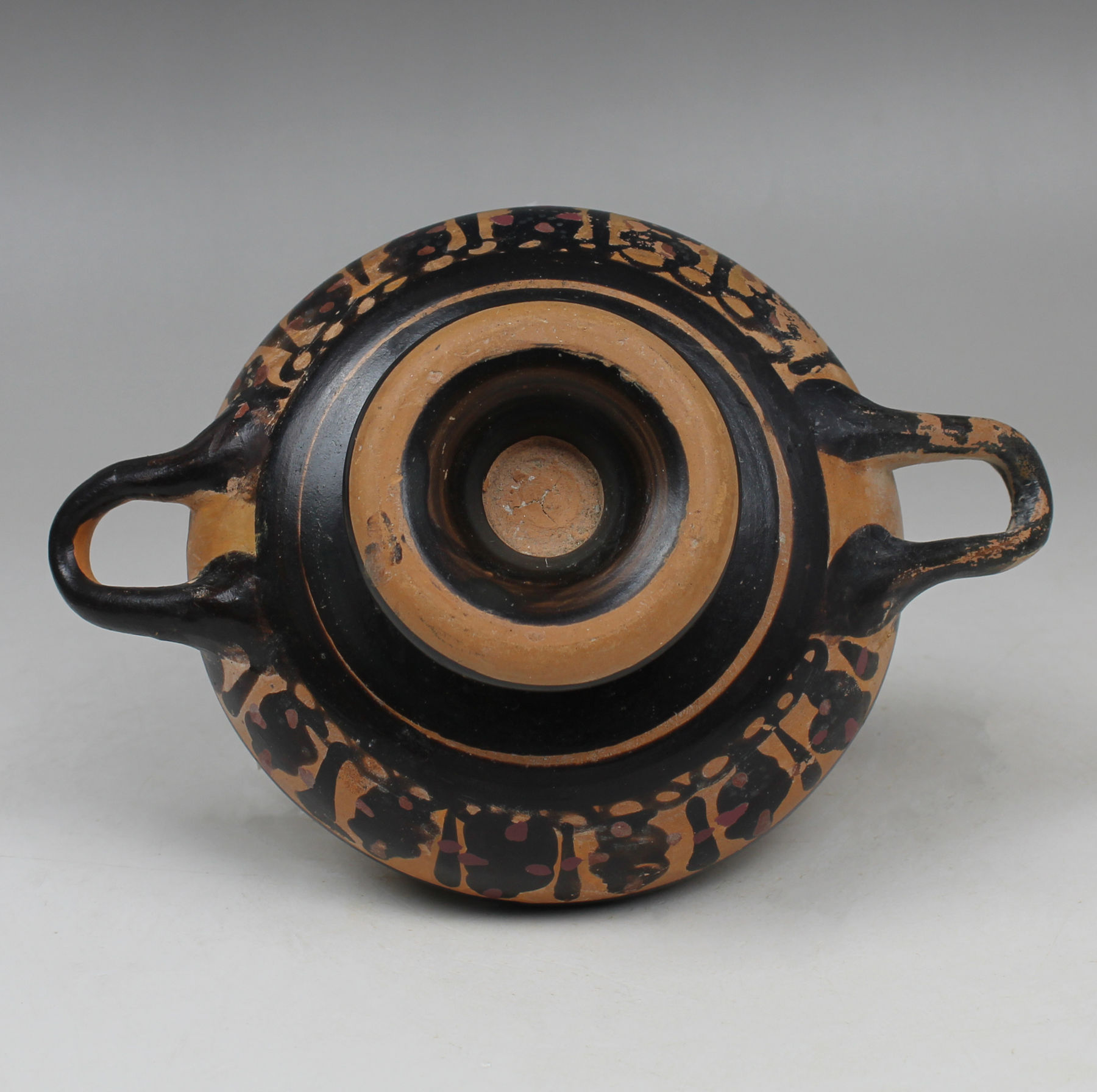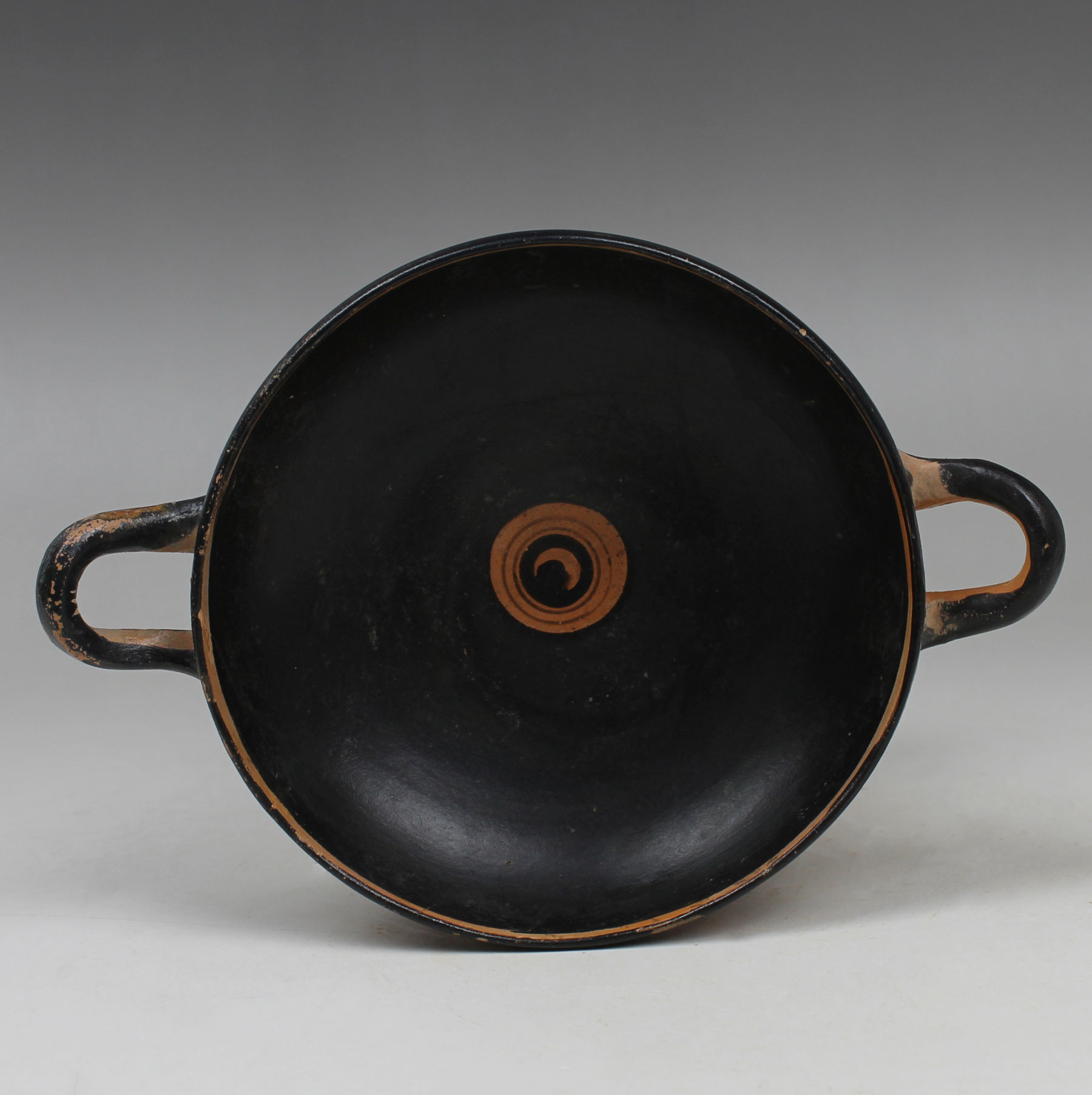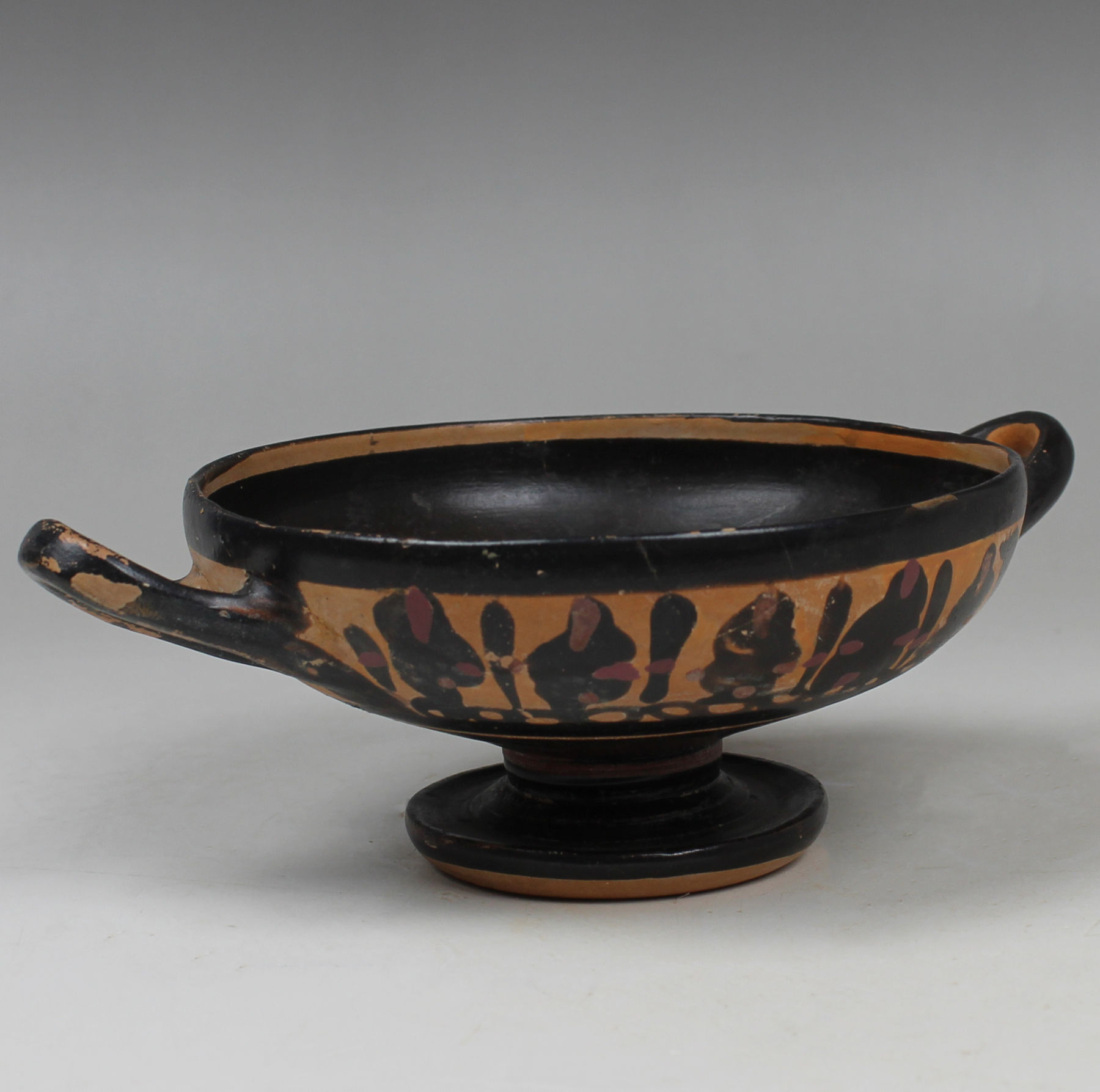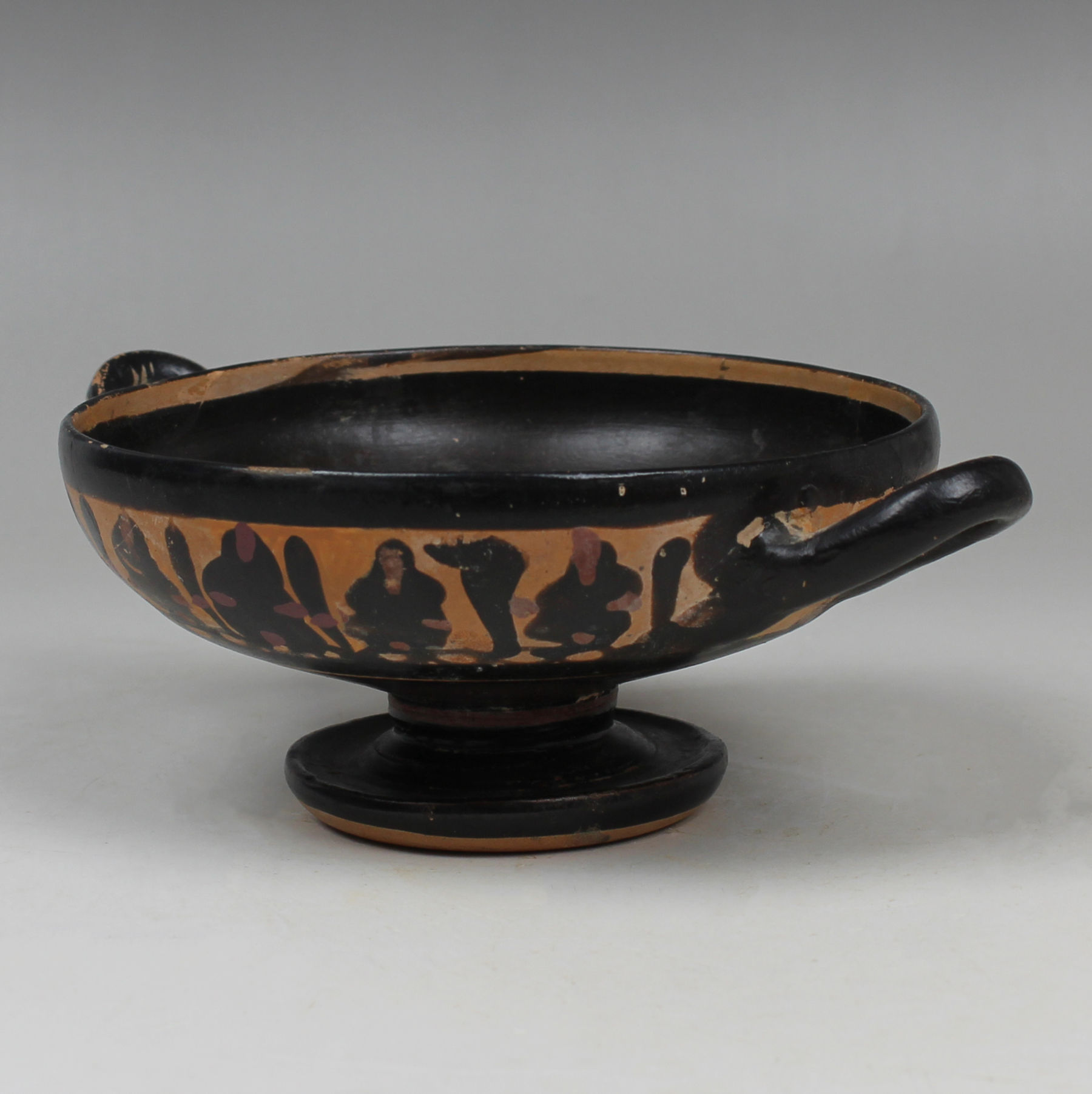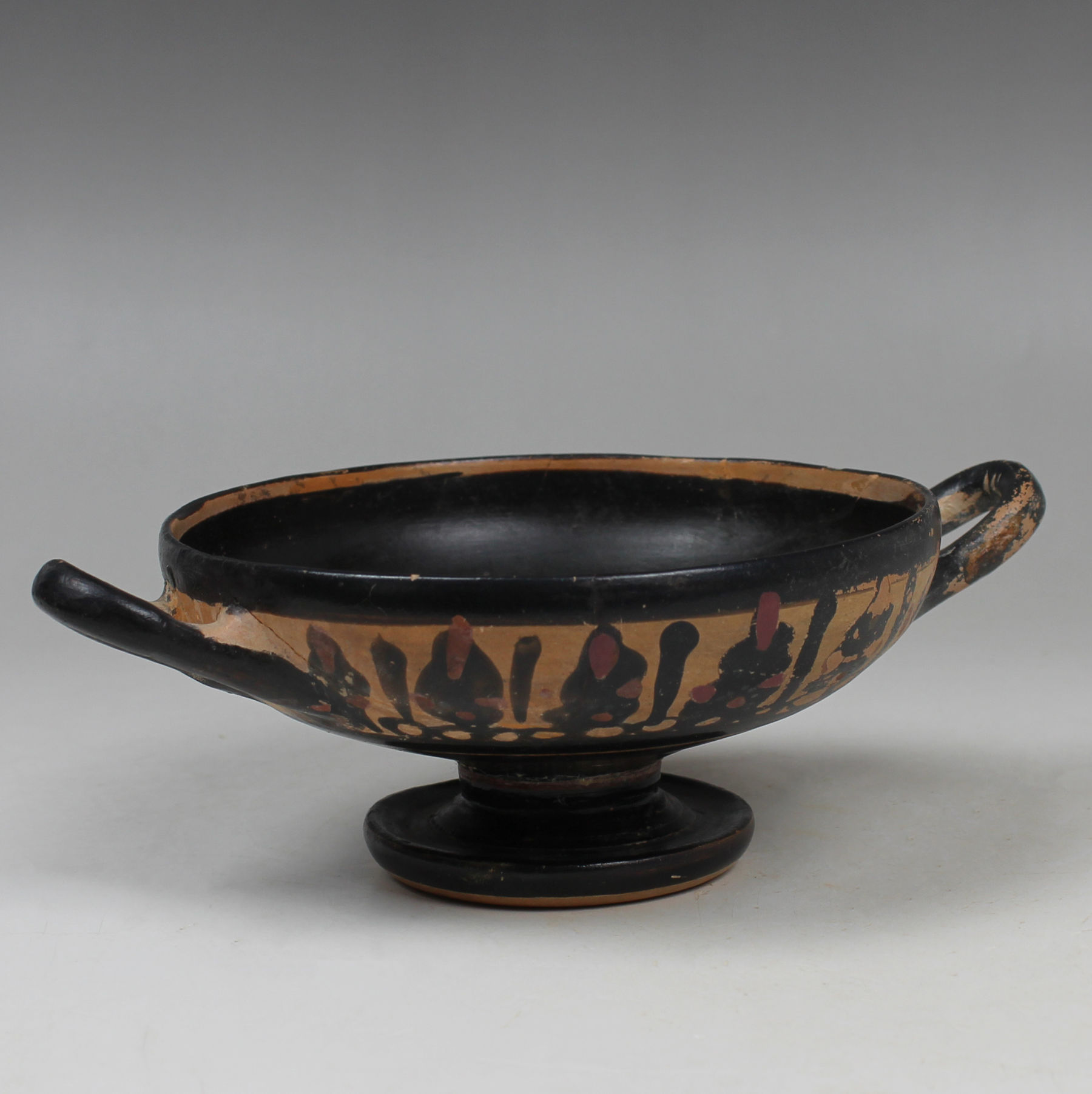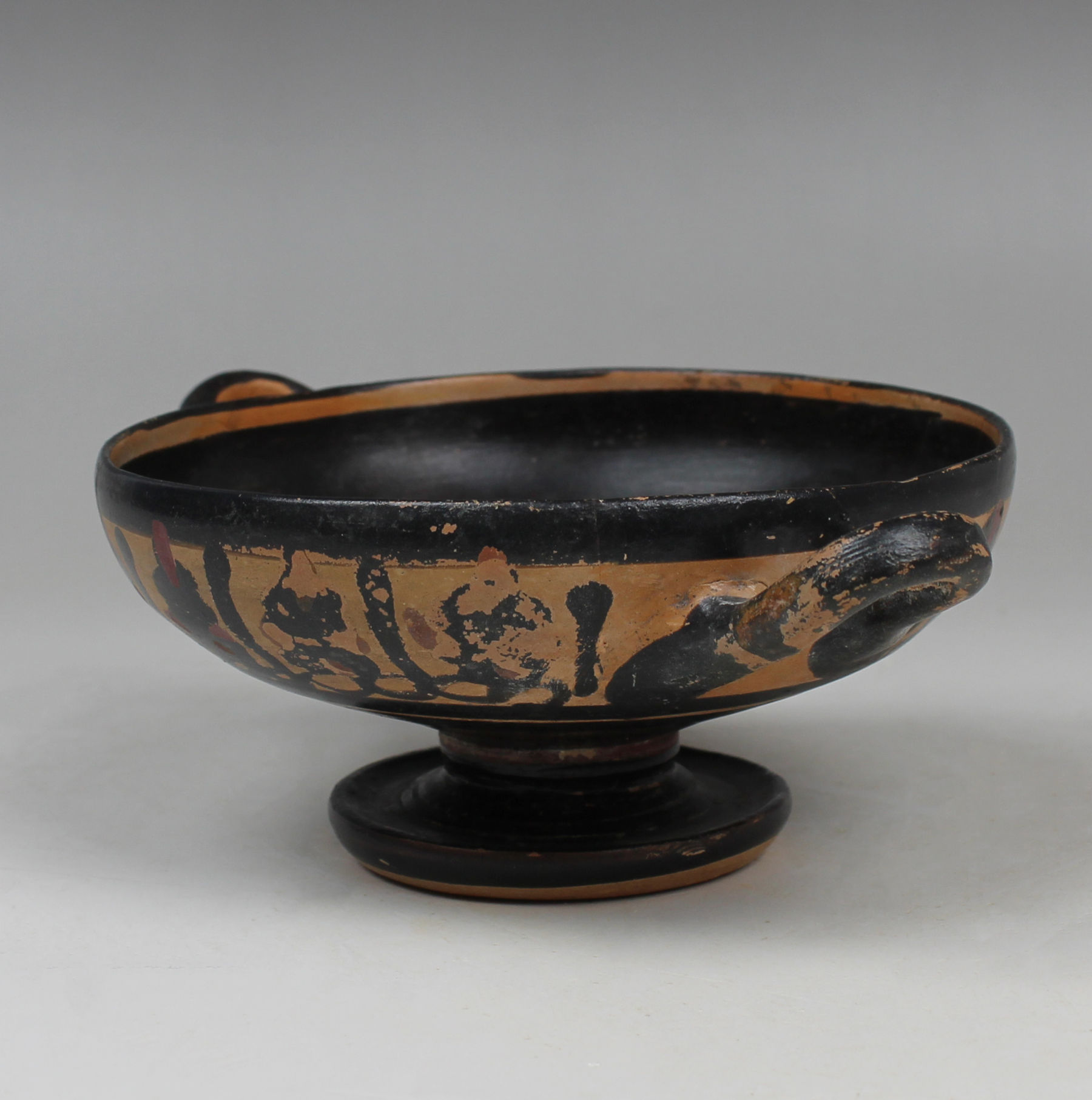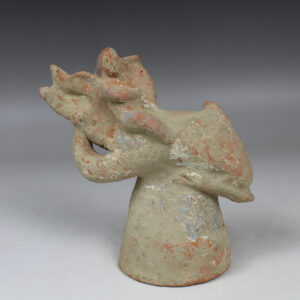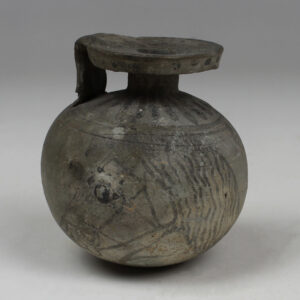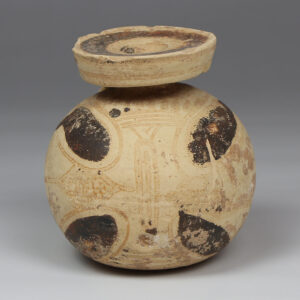Description
| ITEM | Kylix |
| MATERIAL | Pottery |
| CULTURE | Greek, Apulian |
| PERIOD | 4th Century B.C |
| DIMENSIONS | 56 mm x 165 mm x 115 mm |
| CONDITION | Good condition |
| PROVENANCE | Ex Belgian private collection, acquired from Christophe Varosi Gallery, Brussels in 2001 |
The kylix is a distinctive ancient Greek drinking cup that gained popularity from the 6th to the 4th centuries BCE. Characterized by a shallow, broad bowl and horizontal handles on either side, the kylix was a staple in symposia, social gatherings where men reclined on couches, enjoying wine, conversation, and entertainment. The form of the kylix allowed for easy handling and sipping while reclining. Often decorated with red-figure or black-figure scenes on the interior, these depictions ranged from everyday life to mythological narratives, providing visual interest and topics for discussion during the symposium. The kylix was not only a functional vessel but also a canvas for artistic expression and cultural representation in ancient Greece.
Apulian pottery, specifically the Apulian red-figure style, emerged in the southern Italian region of Apulia during the 4th century BCE. This distinctive style of pottery became prominent due to the flourishing workshops in cities such as Taras (modern Taranto). Apulian red-figure pottery is characterized by the use of red clay, with figures and scenes left in the natural red color against a black-glazed background. The vessels produced in Apulian workshops included a wide range of shapes, from kraters and amphorae to lekythoi and pelikai. The scenes depicted on Apulian red-figure pottery often encompassed a diverse array of subjects, such as mythological narratives, daily life, and theatrical performances.
The combination of kylix and Apulian pottery reflects the interconnectedness of Greek and Italic cultures during this period. While the kylix represents a quintessential Greek drinking vessel used in social and cultural contexts, Apulian pottery showcases the distinctive artistic and stylistic contributions of the Apulian region, emphasizing the dynamic exchange and fusion of artistic traditions in the ancient Mediterranean world.


